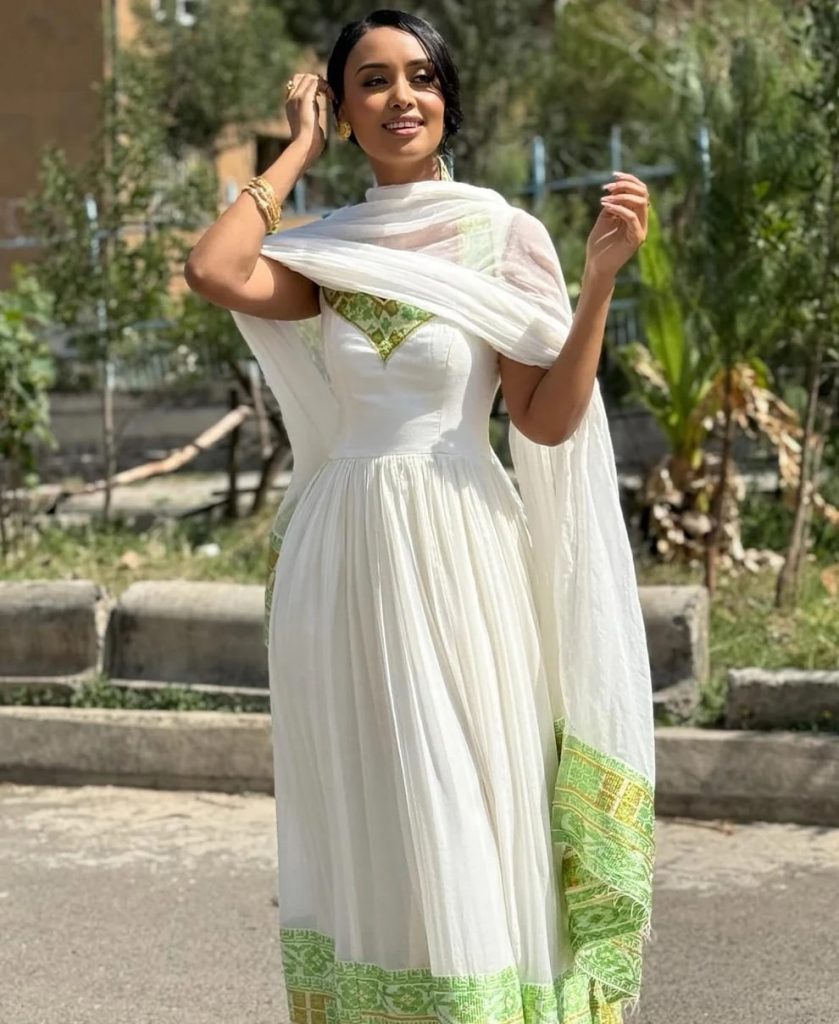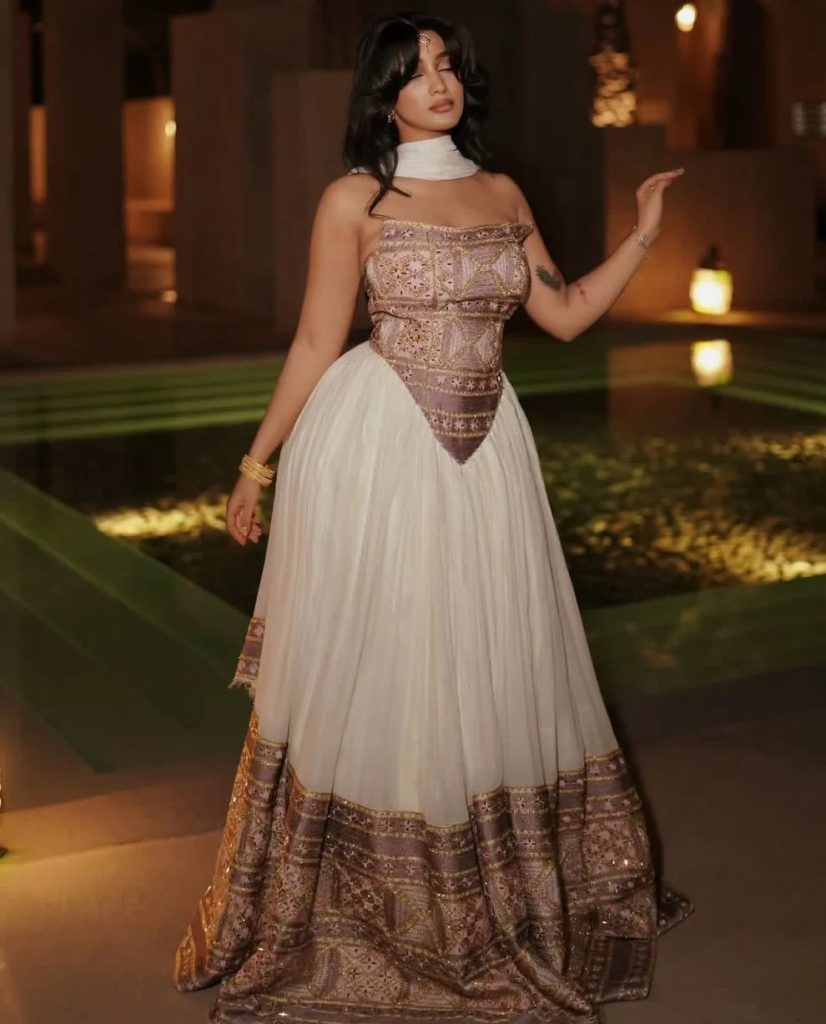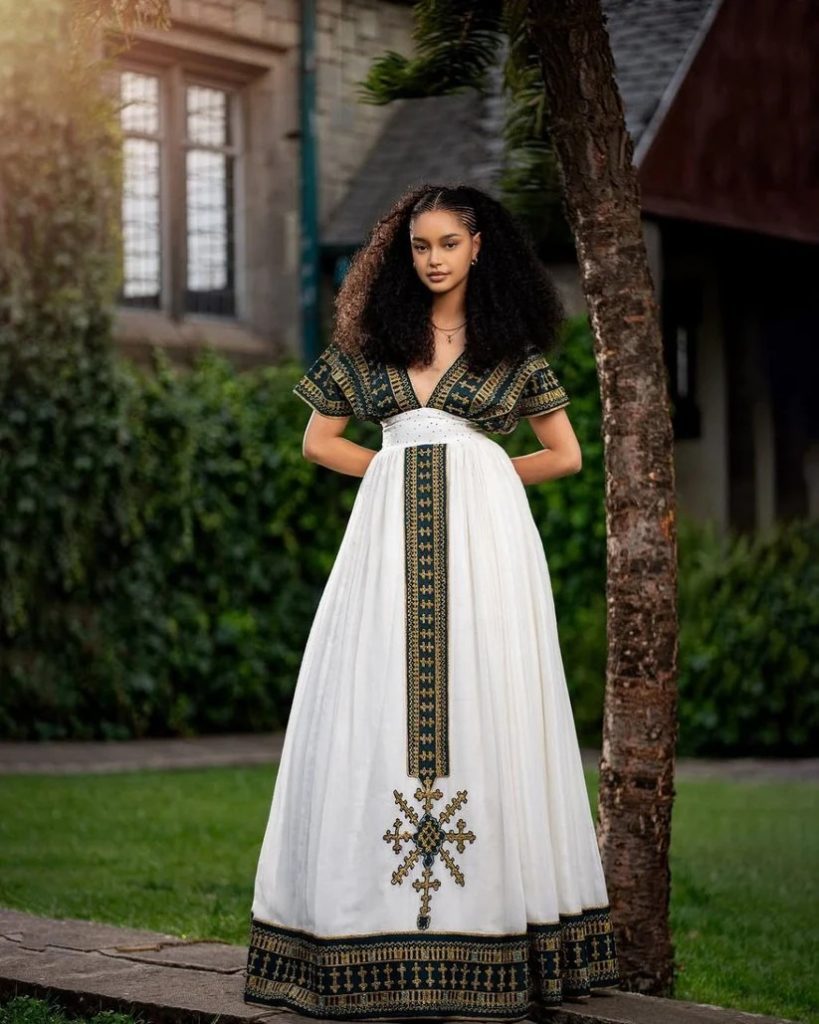Habesha Dress: Traditional Ethiopian Dresses and Where to Buy Them Online
Clothing tells stories about who we are, where we come from, and what we value. In Ethiopia and Eritrea, no garment captures cultural identity better than the Ethiopian traditional dress, widely recognised as the Habesha dress. This attire is not just fabric stitched together. It is history, art, and heritage woven into white cotton with carefully hand-embroidered details.
For many in the diaspora, the Habesha dress is a reminder of home and a way to stay connected to cultural roots. For fashion lovers worldwide, it represents elegance and authenticity. In this guide, we will explore the origins, styles, and modern significance of Ethiopian and Eritrean traditional clothing. More importantly, we will help you find reliable ways to buy authentic Ethiopian dresses online.
What is a Habesha Dress?
The Habesha dress (or Habesha kemis) is a traditional white, handwoven cotton dress worn by Ethiopian and Eritrean women. It is often ankle-length, with intricate embroidery called tibeb stitched along the neckline, sleeves, and hem. These embroidered designs can vary depending on region and family tradition.

Authentic Ethiopian dress highlighting traditional Habesha fashion
Typically, the dress is paired with a matching scarf known as a netela (ነጠላ) in Ethiopia or a shiffon in Eritrea. This scarf is draped around the shoulders or head, adding grace and modesty. While the white fabric symbolises purity, the colourful embroidery reflects creativity and cultural identity.
The Habesha kemis is especially popular during holidays, weddings, and Orthodox Christian celebrations. Although simple in material, it holds deep meaning for those who wear it.
The History of Ethiopian Traditional Dress
The roots of the Ethiopian traditional dress go back centuries. Cotton weaving has been part of Ethiopian culture since ancient times. Local artisans, known as shemane (ሸማኔ), have passed weaving techniques from one generation to the next. The dresses were once entirely handmade, taking weeks to complete.
Historically, embroidery patterns differed across ethnic groups. For example:
-
- Amhara and Tigray regions: bold geometric tibeb designs.
-
- Oromo communities: more colourful patterns reflecting natural surroundings.
-
- Gurage people: layered and more decorative dress forms.
This variation demonstrates the cultural diversity within Ethiopia. Eritrean dresses, while similar, often have distinct necklines and embroidery styles. Both share the same woven cotton base, but regional aesthetics make each unique.
The Ethiopian dress became a cultural marker, worn during important ceremonies to express identity and pride. Over time, while Western clothing became more common in daily life, the Habesha dress remained essential for traditional events.
Styles and Types of Habesha Dresses
Although many think of a Habesha kemis as one type of dress, there are multiple variations:
-
- Classic White Kemis: The most iconic style, with simple coloured embroidery along the edges.
-
- Modern Habesha Dresses: Blends of traditional cotton with satin, chiffon, or lace, often tailored into contemporary cuts.
-
- Eritrean Dress: Similar in concept but often more fitted with wider embroidered necklines. Eritrean versions also use bolder colours in embroidery compared to the Ethiopian style.
-
- Men’s Traditional Attire: Ethiopian and Eritrean men traditionally wear white cotton tunics called jodhpurs or shirt and gabi (a thicker woven shawl).
Each variation highlights the creativity of artisans while preserving the roots of the Ethiopian traditional dress.
When Do People Wear Habesha Dresses?
The Habesha dress is not an everyday garment but rather one reserved for meaningful moments. Common occasions include:
-
- Religious Holidays: Ethiopian Orthodox Christians wear the Habesha kemis during Easter (ፋሲካ), Meskel, and Christmas (ገና).
-
- Weddings: Brides often wear custom-made Ethiopian dresses with heavy embroidery, while guests also attend in elegant versions.
-
- Cultural Festivals: Epiphany (ጥምቀት) and Irreecha (Oromo thanksgiving) celebrations see crowds dressed in colourful traditional clothing.
-
- Diaspora Gatherings: Ethiopians and Eritreans abroad wear these garments during community events to maintain cultural connection.
For many, wearing an Ethiopian traditional dress is a way of showing pride in identity, even when far from home.

Modern Ethiopian dress styled with intricate gold border details
Modern Adaptations of the Ethiopian Dress
Fashion never stands still, and the Habesha dress has evolved with time. Today’s Ethiopian and Eritrean designers incorporate modern fabrics, shorter cuts, and new embroidery colours.
In Addis Ababa, designers such as Fikirte Addis have gained global recognition for turning the Habesha kemis into runway-ready fashion. The diaspora also contributes to this trend, adapting the traditional Ethiopian dress for weddings abroad and fusing it with Western tailoring.
Modern versions often include:
-
- Fitted silhouettes.
-
- Embroidery with metallic threads.
-
- Hybrid designs mixing cotton with silk or chiffon.
These adaptations make the Habesha dress more versatile, appealing to younger generations while still honouring tradition.
Where to Buy Authentic Ethiopian Dresses Online
Buying a genuine Ethiopian traditional dress online can be challenging. Since many are handmade, quality varies greatly. Here are some things to consider:
-
- Craftsmanship: Look for handmade or handwoven descriptions. Machine-made versions may lack authenticity.
-
- Embroidery Detail: Genuine tibeb is often done by hand.
-
- Sellers: Prioritise diaspora-owned shops or verified Ethiopian fashion boutiques.
Where to shop online:
-
- Etsy: Many diaspora artisans sell Habesha kemis and Eritrean dresses on the platform.
-
- Dedicated Boutiques: Websites run by Ethiopian designers or cultural clothing stores.
-
- African Clothing Retailers: Larger stores often include Ethiopian and Eritrean sections.
When shopping, always read reviews and confirm sizing, as handmade dresses may not follow Western size charts.
Care and Maintenance of Habesha Dresses
Because the Habesha dress is made of delicate cotton, proper care is important:
-
- Washing: Hand wash in cold water to preserve embroidery.
-
- Drying: Air dry flat, avoid direct sunlight which can fade colours.
-
- Storage: Fold carefully or hang in a garment bag to prevent snagging of embroidery.
Maintaining the dress ensures it can be passed down through generations, just as weaving techniques have been.
Cultural Significance Beyond Fashion
The Ethiopian traditional dress is more than clothing. It reflects national pride, religious devotion, and social status. Colours and embroidery patterns often carry symbolic meaning. For instance, green may represent fertility, while gold threads can symbolise prosperity.
On a wider level, Ethiopia and Eritrea share intangible heritage rooted in these garments. UNESCO has recognised the value of such traditions under its work on intangible cultural heritage. This shows that the Habesha dress is not just fashion, but a living cultural treasure.

Modern Habesha dress inspired by classic Ethiopian kemis design
The Ethiopian traditional dress continues to connect people to their roots while evolving into modern fashion statements. The Habesha kemis remains timeless, worn proudly at weddings, festivals, and holidays. Whether you are part of the Ethiopian or Eritrean community or simply a lover of authentic world fashion, owning a Habesha dress is a way of embracing history and artistry.
When buying online, always look for authenticity and craftsmanship. A true Ethiopian dress is not just a garment but a piece of heritage. With care, it can last for years and serve as a reminder of culture, pride, and identity.
